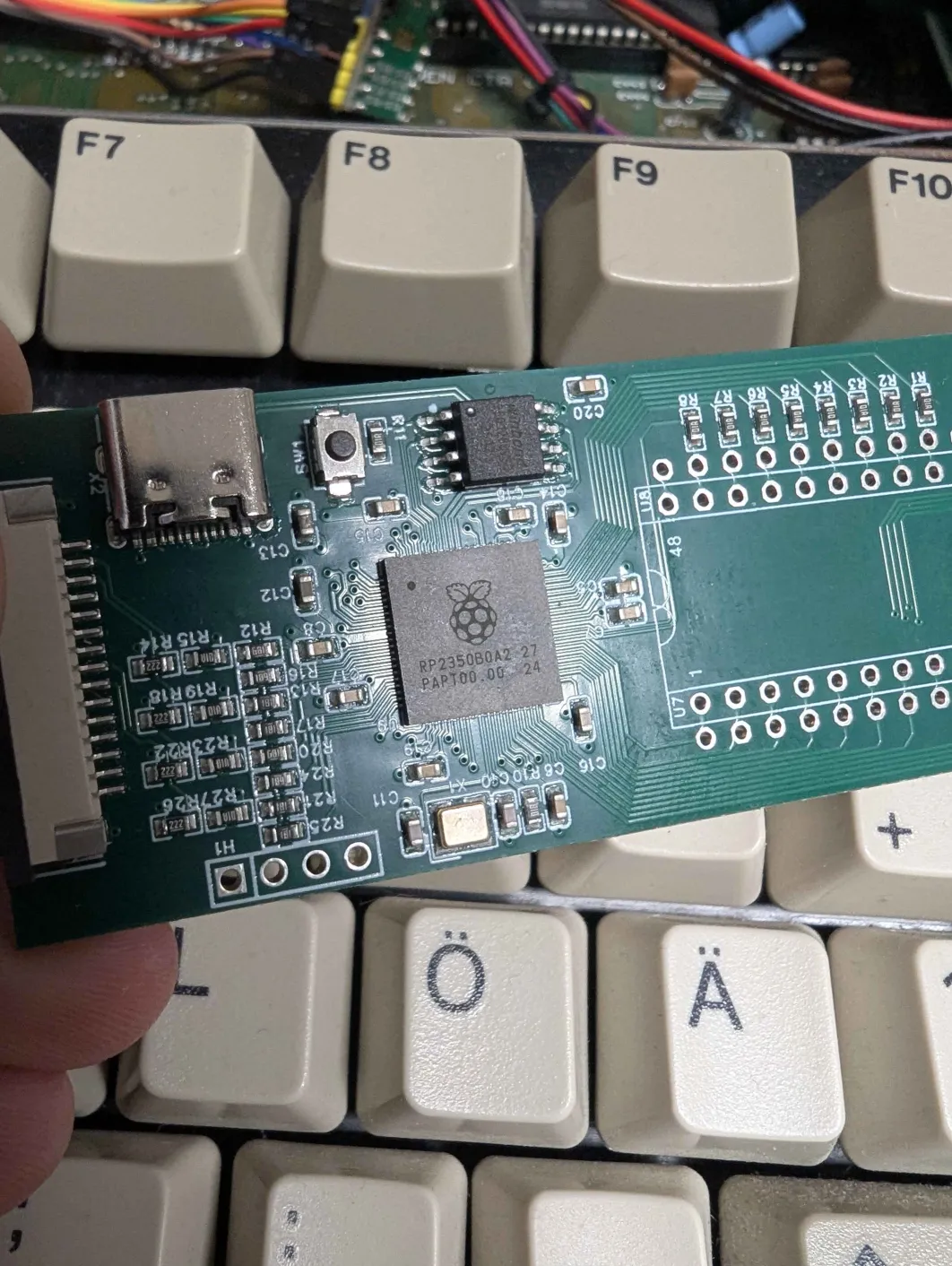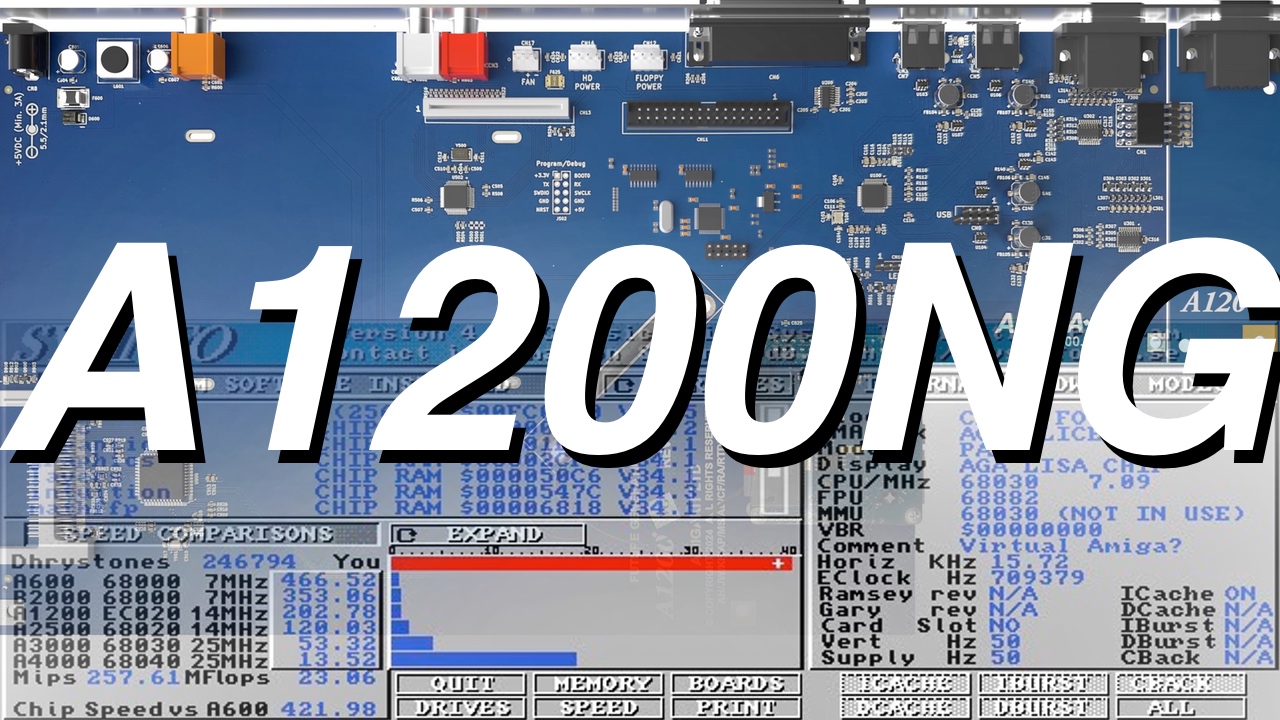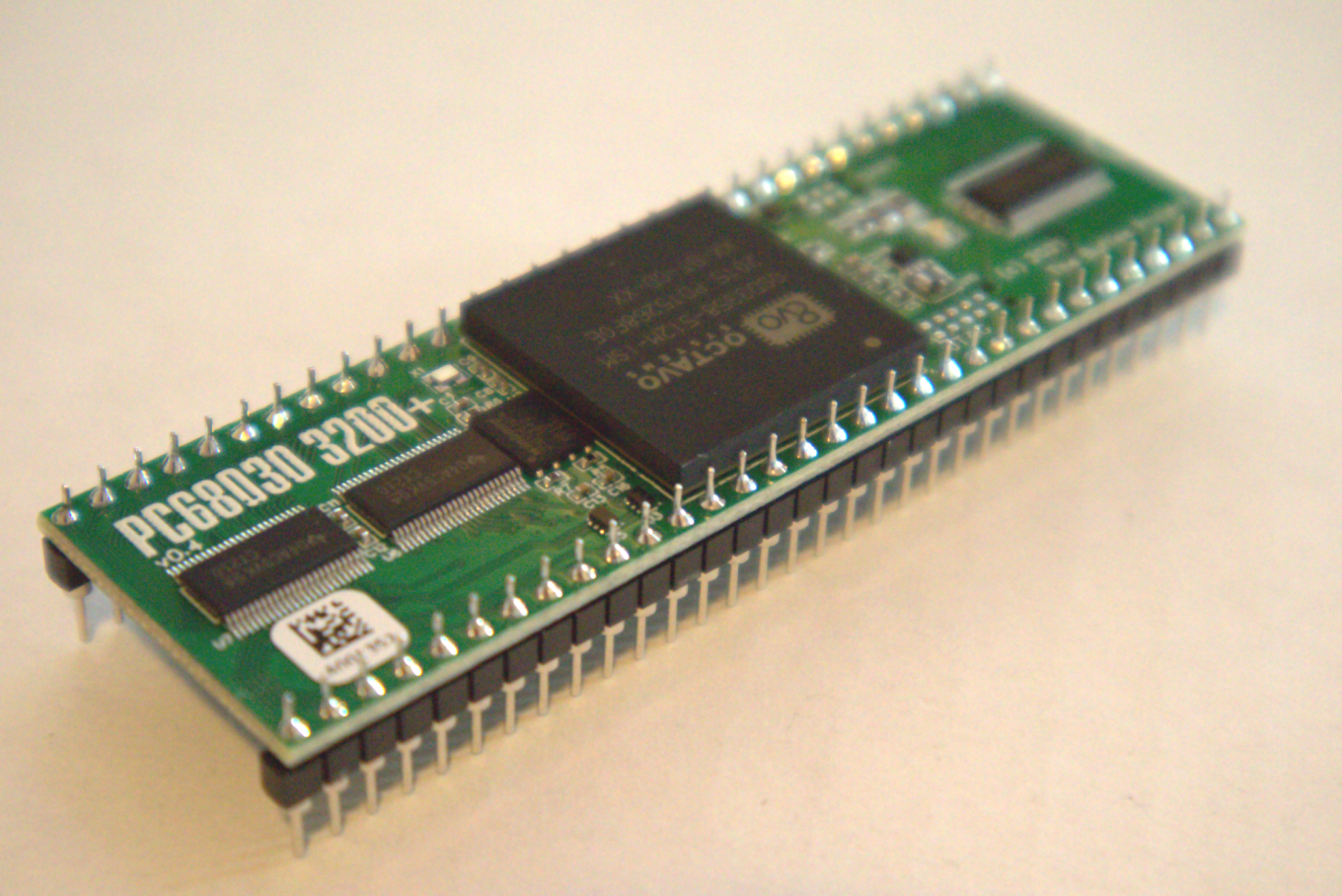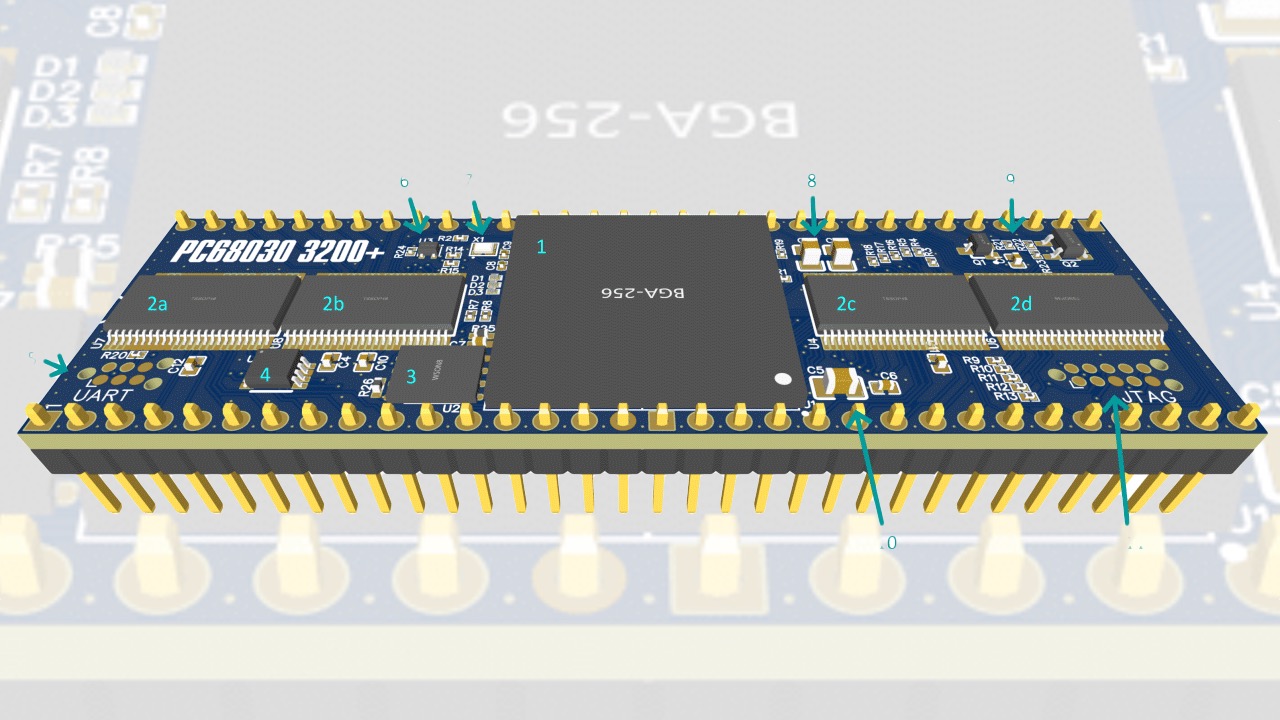Finally! The long-anticipated Framethrower adapter, an essential add-on for the popular PiStorm accelerator, is now officially available for the Amiga 500 and Amiga 2000! For 30 euros or less… And even cheaper still if you build your own. This is a bargain upgrade for your PiStorm Amiga.
The Technical Deep Dive of the Framethrower
The Framethrower is developed by Claude Schwarz. This ingenious piece of hardware by him finally solves the long-standing video problem. PiStorm users needed to separate outputs for the Amiga’s native chip graphics and the accelerated RTG (Retargetable Graphics) desktop until now.
For the technically minded, the Framethrower acts as a highly efficient, single-cable bridge, simplifying the video architecture of your accelerated Amiga:
- Interception at the Source (Denise)
– The Framethrower is installed by socketing the original Denise video chip (used in OCS/ECS Amigas) onto the adapter itself, which is then placed back into the Denise socket on the A500/A2000 motherboard. This positioning allows the adapter to tap the raw, digital 12-bit RGB video signals directly from the chip—the purest source for Amiga’s native output. - The CSI Connection
– A flexible flat cable (FPC cable) connects the Framethrower’s adapter board to the CSI (Camera Serial Interface) port on the Raspberry Pi unit that drives the PiStorm. This is a high-bandwidth interface designed for raw data transfer, making it ideal for the low-latency capture of the Amiga’s video frames. - Integration and Consolidation
– The Framethrower module’s task is a form of highly specialized ScanDoubling/Digital Conversion. It takes the native RGB signal, converts and processes it, and then feeds it directly into the Raspberry Pi. This means the Amiga’s native graphics (for games, demos, and the classic Workbench screen) are now processed and output alongside the high-resolution RTG graphics through the PiStorm’s existing HDMI port.
The result? A clean, pixel-perfect digital video signal for all Amiga screen modes delivered via a single HDMI cable, eliminating the need for an external RGB2HDMI or a secondary video output device.
| Feature | Pre-Framethrower PiStorm Setup | PiStorm + Framethrower Setup |
| Native Video (Games/Demos) | Required separate RGB2HDMI or Amiga’s analog port. | Integrated: Outputs via PiStorm’s HDMI. |
| Accelerated Video (RTG) | Outputs via PiStorm’s HDMI. | Integrated: Outputs via PiStorm’s HDMI. |
| Monitor Count | Required a separate RGB2HDMI or Amiga’s analog port. | One modern HDMI monitor. |
| Adapter Redundancy | Needed an extra RGB2HDMI adapter. | Adapter is now superfluous. |
Sound is Coming for the Framethrower
While the Framethrower is currently video-only, the remarkable Claude Schwarz has confirmed that sound playback into the HDMI output is being actively developed via a software update. Amiga enthusiasts can look forward to a truly unified, single-cable connection in the near future.
The Framethrower is compatible with Amiga 500 and Amiga 2000 users worldwide who use a PiStorm accelerator.




